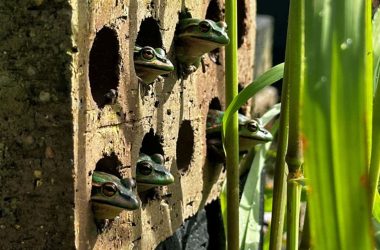The newly described plant Relictithismia kimotsukiensis solely emerges above floor for just a few days a 12 months
TAGANE Shuichiro
A tiny plant that feeds on fungus and has no pigment has been named as the primary new genus of plant from Japan since 1930.
It was discovered within the Kimotsuki mountains on the island of Kyushu by an beginner botanist in June 2022, however it has taken till now to verify its distinctive standing. Thus far, researchers have solely discovered 5 people in a single location and estimate the overall inhabitants might quantity as few as 50.
The plant, which grows to three centimetres tall and a couple of centimetres large, emerges to the floor for as little as every week annually. It belongs to a bunch of crops referred to as fairy lanterns and has been given the scientific identify Relictithismia kimotsukiensis.
Not like most different crops, fairy lanterns don’t produce the inexperienced pigment chlorophyll, which is critical for photosynthesis. As an alternative, they get their power from fungi. “This adaptation leads to appearances that may appear alien in comparison with the extra acquainted, photosynthetic crops,” says Kenji Suetsugu from Kobe College in Japan, one of many scientists who described the brand new species.
“The distinctive look of this new plant species does evoke photos of squids or aliens, making it a really uncommon and interesting addition to the botanical world.”
Suetsugu has proposed a Japanese identify for the plant, mujina-no-shokudai, which interprets as “raccoon canine’s candleholder”.
It took nearly a 12 months for Suetsugu to seek out the plant rising after he first heard about it. It was a second of “pleasure and reduction”, he says, as a result of he feared it might take a decade to gather the specimens wanted to explain it correctly.
He expects the Japanese authorities to present the crops endangered species safety and take steps to preserve the inhabitants, as it’s near a street.
“[The discovery] challenges the notion that new species can solely be present in distant or uncharted territories, suggesting as a substitute that even well-studied areas can harbour undiscovered botanical treasures,” says Suetsugu.
Subjects:












